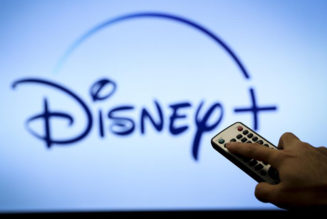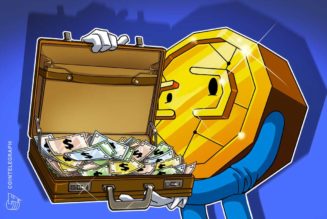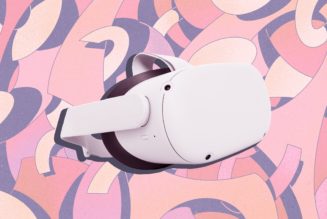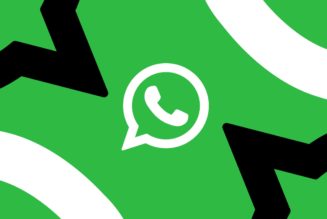
Elon Musk intends to make himself immortal by inserting himself into history books as best he can: electric cars will do, but so will a private mission to Mars. At times, it seems that he is the last subscriber to the “Great Man” theory of history.
The problem is that history tends to be written by the survivors — a heel turn late in life, for instance, will obliterate any contemporary admiration. In Los Angeles, this is most clearly borne out by William Mullholland. Mulholland — an obsessed engineer whose dream was to supply Los Angeles with enough water for generations of growth — performed an examination on the St. Francis Dam hours before it collapsed, killing hundreds in one of the worst disasters in California’s history. Brilliant and witty as Mullholland was, he is now known primarily for that disaster and his abysmal behavior in the Owens Valley water conflict, which inspired the movie Chinatown.
Well, none of us have control over our own obituaries, assuming we are lucky enough to get an obituary at all. But it is certainly curious to see a man with such an obvious interest in his legacy make moves that may destroy it. This brings us to the reopening of the Tesla Fremont plant in apparent violation of an Alameda County health order prohibiting the factory from operating.
Last week, California Governor Gavin Newsom announced that some manufacturing in the state would be allowed to resume on May 8; but if the state and the county disagree, the more restrictive order is the one that matters. And although some counties may go slower than the state in reopening business, no one may go faster, according to Sonia Angell, the head of the state’s department of public health.
The immediate action began with tweets: Musk railed against the Alameda County order to continue sheltering in place and threatened to leave California. He also filed suit against Alameda County. Tesla began making cars again at its Fremont, California factory last weekend, The Verge’s Sean O’Kane reported. Workers who had been placed on furlough were called back. On Monday, Musk tweeted confirmation of that reporting and said, “If anyone is arrested, I ask that it only be me.” Shortly after that, Nevada Gigafactory workers received an email calling them back to work as well, O’Kane reported.
California should let Tesla & @elonmusk open the plant, NOW. It can be done Fast & Safely!
— Donald J. Trump (@realDonaldTrump) May 12, 2020
On Tuesday, US President Donald Trump tweeted his support for Musk: “California should let Tesla & @elonmusk open the plant, NOW. It can be done Fast & Safely!” Later that evening, Alameda County announced it had received Tesla’s safety plan for Fremont and that “Tesla can begin to augment their minimum business operations this week in preparation for possible reopening as soon as next week.” On Wednesday, an internal email sent from Tesla said that the company is ramping up its production this week to get to full capacity, Bloomberg News reported.
Fremont is located in one of the six counties that make up the San Francisco Bay Area, which was the first in the country to issue shelter-in-place orders and close non-essential businesses — a move that Musk resisted at the time, causing a county health official to remark Musk had created a public health risk. But the Bay Area’s quick action — along with a little bit of luck — ensured that the cities in it were spared the full horror of the outbreak, at least so far. Though the first community-transmission cases were detected here, only about 350 deaths from COVID-19 had been confirmed as of the beginning of May; University of California San Francisco epidemiologist George Rutherford estimated that the Bay Area’s action had saved more than 1,000 lives.
“California has been progressive and forward-thinking in how they’ve handled COVID-19, and that shows in their numbers,” John Brownstein, who leads the Computational Epidemiology Lab at Boston Children’s Hospital, tells The Verge.
Meanwhile, elsewhere in the country, major outbreaks have occurred at meat packing plants. One report from a Chinese restaurant showed that a single person’s breathing infected 10 people from three families, two of which were sitting at separate tables, over the course of an hour and a half. Another report, of an outbreak in a South Korean call center, showed that one infected employee in the call center resulted in 94 cases — though how much of that is attributable to touching shared objects and how much was airflow remains unknown. A choir rehearsal with a single sick person resulted in 45 cases. At one Staten Island Amazon warehouse, there have been at least 35 cases; across 125 Amazon warehouse facilities, workers have recorded at least 606 cases. At least one Amazon warehouse worker has died of COVID-19.
There are still things we don’t know about how the virus spreads, but we do have some clues from these reports: closed environments where people spend a lot of time in proximity seem to be risks, says Brownstein, who is also a professor at Harvard Medical School. Brownstein thinks there are ways to mitigate risk from these environments, but those decisions will vary by location and should be made by local and state governments.
“The biggest thing that offended me about what’s being proposed here is the civil disobedience aspect,” says Mark Cullen, director of the Center for Population Health Sciences at Stanford, in an interview. “Any time you take what turns out to be brilliant planning on the part of our six counties — and to snub the value of that very publicly, make this ‘fuck you’ libertarian statement, and say ‘if you don’t do what I want, I’ll move to another state’ — highlights what’s wrong with public health thinking and policy. It’s outrageous.”
There’s another unknown: what happens if businesses that are reopening must shut down again, says Liliana Tenney, a senior instructor at the Colorado School of Public Health. Until there’s legislation to protect these workers, we should respect local, state, and federal restrictions — and err on the side of caution, Tenney says. That protects all citizens, but particularly workers who face the choice of either working at places like Tesla or unemployment.
“What we’ve seen through our experience is that most employers are very nervous about this return to work and the return to operations,” Tenney tells The Verge. “And they are doing everything in their power to enact safety measures but also to pause and take it slowly.”
All of the experts I spoke to agreed there are ways to make workplaces like Tesla safer. One is to group workers into cohorts, so if one person in the group gets sick, the number of people who are exposed is smaller. Screening people for coronavirus on a daily or weekly basis will also make it less likely a disastrous outbreak will occur, particularly if it’s paired with contact tracing. Personal protective equipment, such as masks and gloves, may make workers safer, too. Managing the facility — spacing people out, increasing ventilation, and disinfecting surfaces more frequently — will also lower risks to the workforce.
A “return to work” playbook from Tesla incorporates these ideas, which the company says were inspired by measures implemented at the Chinese Gigafactory. Measures include increased cleaning, providing hand sanitizer, enforcing social distancing, temperature checks at the entry of the factory, adjusting work shifts, reducing the number of people allowed on company shuttles, and providing personal protective equipment. One of the assembly lines is, famously, a tent in a parking lot, which may also provide better ventilation than indoor lines.
Production lines are moving more slowly than usual, according to internal Tesla correspondence seen by CNBC. Three Fremont employees told the outlet that their temperatures were taken at the factory entrance, dispensers for hand sanitizer had been placed, and they’d been given surgical masks. Scheduled break times were meant to reduce contact in bathrooms and dining areas.
Still, several employees feel they are being pressured to return to work, NBC News reported. One worker said that her supervisor told her that if she didn’t return to work as directed, she was in danger of being fired. Internal Tesla emails viewed by NBC said that employees who didn’t return to work would no longer receive unemployment insurance, and would have to take unpaid leave. A worker told NBC that staying away from people in the plant was difficult. “It’s hard to stay six feet from people,” the anonymous employee told the outlet. “It’s a production line. There’s a lot of people.” Another worker told The New York Times that the production line hadn’t changed much, making it difficult to avoid other workers.
That was echoed in comments to Joseph Geha, a reporter for the Bay Area News Group: “The work that we do requires us to constantly be in close proximity to people,” the worker said. (The negative views are not uniformly held: a worker told Geha that they were fine with the factory reopening.) Another worker told The San Jose Mercury News that tools used on the production line are shared and aren’t being cleaned or sanitized between uses.
On one level, the kerfuffle is bewildering. Musk has spent years presenting himself as an enthusiastic acolyte of science. What’s more, in an interview with The New York Times on May 9th, an Alameda county official said that the county and Tesla had been close to an agreement to reopen the plant on May 18.
“We were working on a lot of policies and procedures to help operate that plant and quite frankly, I think Tesla did a pretty good job, and that’s why I had it to the point where on May 18, Tesla would have opened,” said Scott Haggerty, the county supervisor for the district where the Fremont plant operates, according to The New York Times. “I know Elon knew that. But he wanted it this week.”
The May 18 restart would have put Tesla squarely in line with other automakers’ efforts to reopen their plants. Mercedes-Benz fired up its Alabama facility on April 27. BMW’s South Carolina plant started up on May 4; GM began production on May 11, as did Honda, Subaru, and Volvo. Toyota planned to restart its US production this week. Fiat Chrysler will resume on May 18, as will Ford. Volkswagen has postponed starting up its plants indefinitely.
What’s more, car sales cratered in March. In April, though, they seemed to slightly recover, though sales were still down 50 percent compared with April 2019. So why start the fight with Alameda at all?
Just before the coronavirus-related health orders closed plants, Tesla was launching its Model Y SUV. SUVs, along with pickup trucks, were among the few bright spots in the market these last few months, says Jessica Caldwell, an analyst for Edmunds. Dealers have also been offering remarkable incentives, such as zero percent interest loans for as long as seven years. Different areas in the world are recovering at different speeds, Caldwell points out. So Musk might want his factories up and running for when markets — in the US or elsewhere — recover. And Tesla makes cars at just two places: Shanghai and Fremont.
“If they’re not producing at either factory they have no global production,” Caldwell says. “And as the world comes back online, Tesla will be competing against other automakers who are literally throwing out all the stops.”
The Model Y is particularly important, says Karl Brauer, the executive publisher at Autotrader and Kelly Blue Book. “He’s got enough demand in the US and globally that he can probably sell most — if not every — Model Y about as fast as he can build them.”
There’s another factor, and it’s political. Before starting his standoff with Alameda County, Musk was already agitating to open Fremont on a private call with President Donald Trump and some other CEOs. Musk told Trump that he did not view returning to work as a significant risk, and the president agreed, The Washington Post reported. SpaceX, Musk’s commercial space company, is heavily reliant on government contracts; if Musk were trying to curry favor with Trump, it wouldn’t be the first time.
There’s also Musk’s image to consider, says Brauer. “Elon rightfully feels that taking a non-conventional approach has served him relatively well for the last 15 years that he’s been at Tesla,” Brauer says. “So if it’s unconventional to break a government mandate if he doesn’t think it’s a necessary level of caution, it plays into his image and his customer base, which likes his unconventional approach.”
But the question may be if Musk loses more than he gains by aligning himself with Trump and others who have persistently tried to convince Americans that stay-home orders aren’t necessary, Brauer says. He might gain new customers — people who ordinarily might not care about electric vehicles but want to support Musk for pushing back against government overreach. Longtime Tesla customers, though, might feel alienated, particularly those who are more collectively-minded.
Cullen, the epidemiologist, is among that group. “I drive a fucking Tesla,” Cullen tells The Verge. “When the cheap ones came out, I bought one. I love the car. I don’t love Musk.”
If Musk reopens Tesla successfully, and without sickening his workers, we should all expect an “I told you so!” tweetstorm. But if Fremont workers get sick and bring COVID-19 with them into the places where they live, seeding outbreaks like we’ve seen with meatpacking plants and other close-quarters facilities, Musk stands to lose a tremendous amount of confidence the public has placed in him. Historically, Musk has been a connoisseur of risk — but now he’s gambling with his legacy.
If Alameda County’s COVID-19 case counts spike two or three weeks from now, Musk’s role in seeding an epidemic will likely be the first line in his obituary. Under the Great Man theory of history, the man in question takes all the blame.









